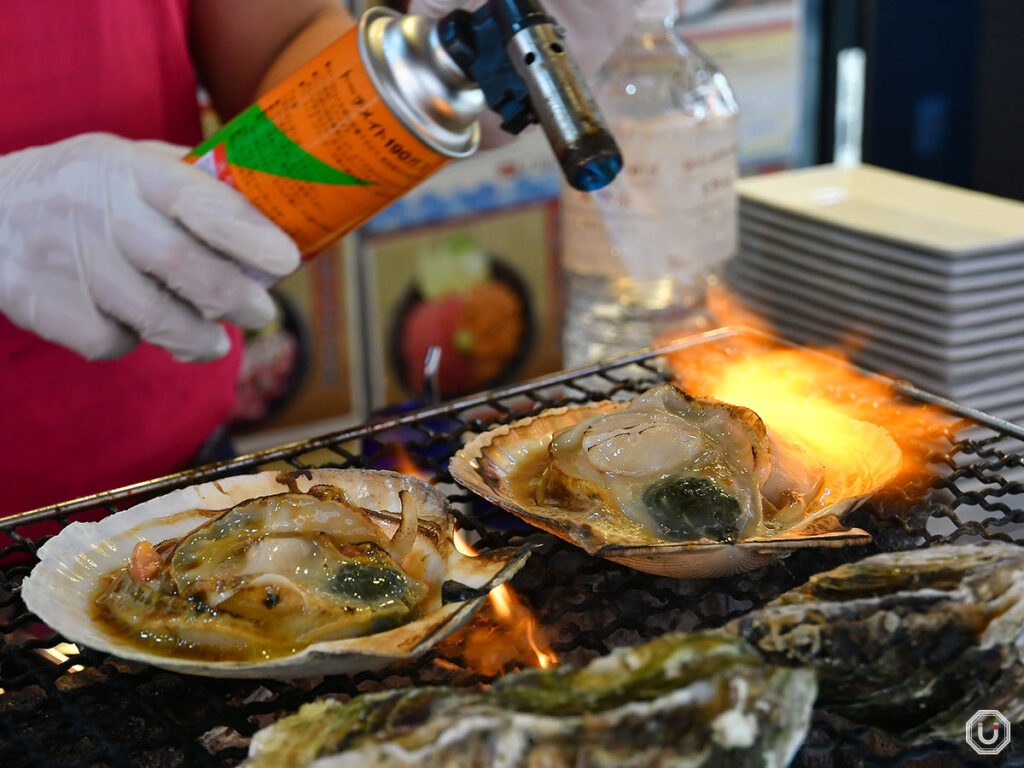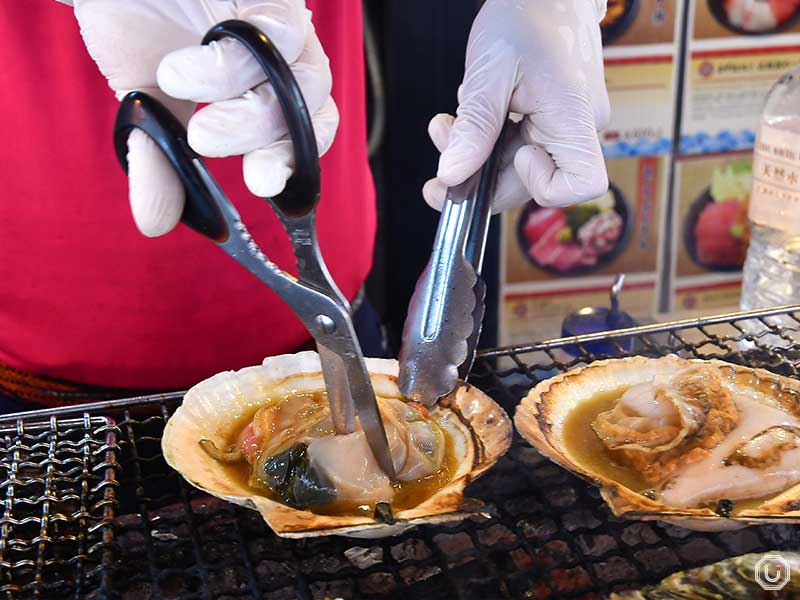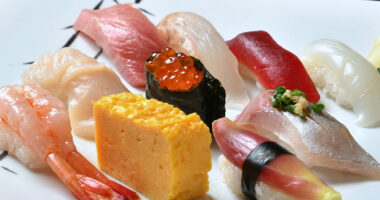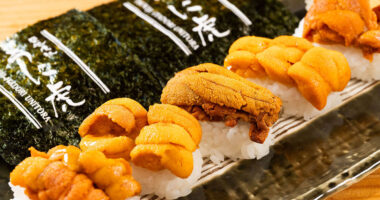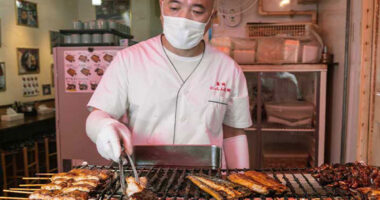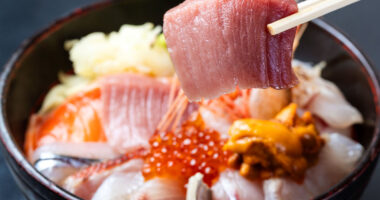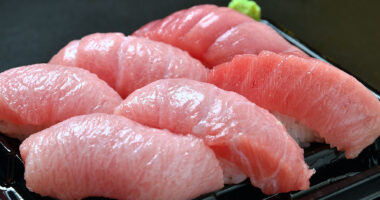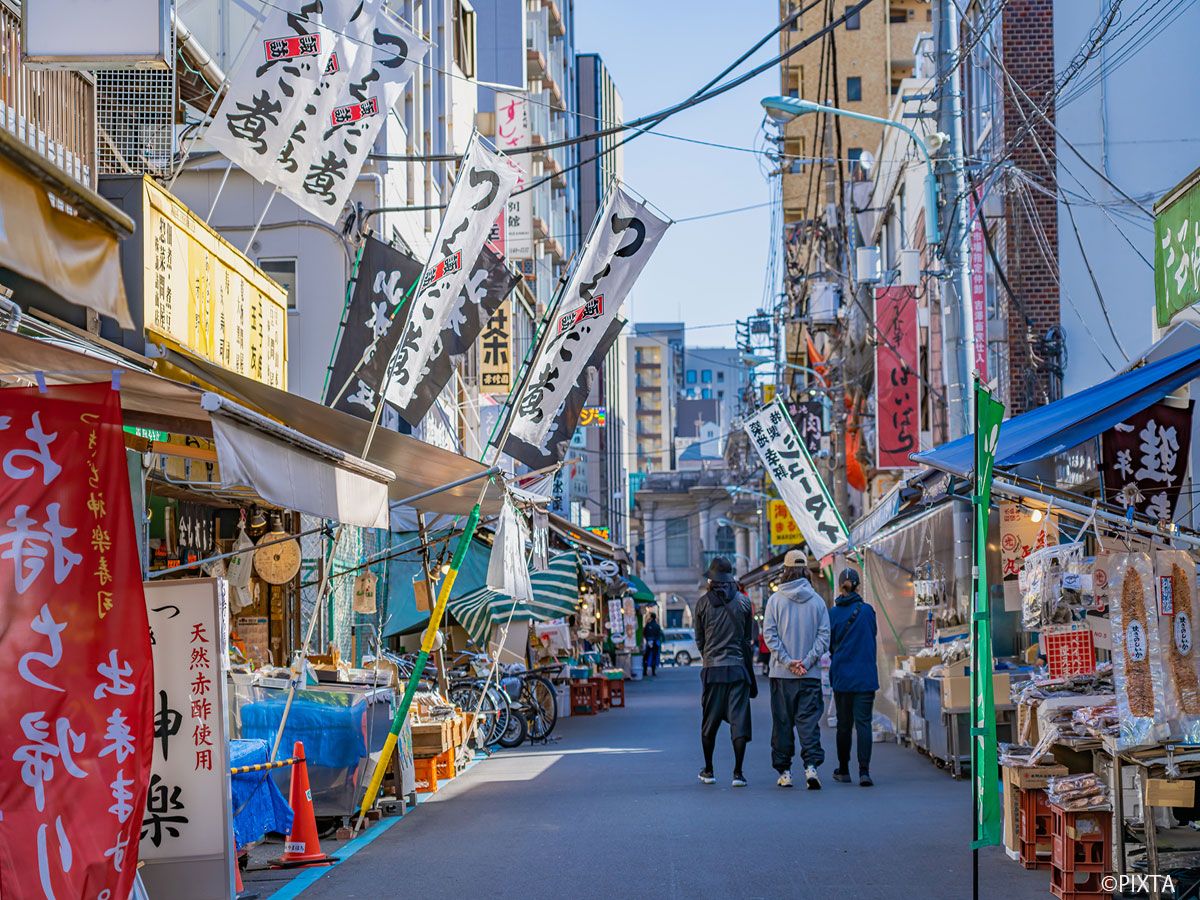Experiencing local food is one of the best ways to understand a region’s culture and its people.
While Tokyo is home to countless restaurants, its markets represent the very roots of Japanese food culture. Among them, the Tsukiji and Toyosu fish markets are more than just sightseeing spots—they offer something deeper and more meaningful.

Photo for illustrative purposes
Tsukiji Market has a long history and remains a place where you can experience fresh seafood and traditional Japanese food culture. Meanwhile, Toyosu Market, newly established in 2018, offers state-of-the-art facilities and a well-organized visitor environment where you can observe wholesale operations up close.
Each market has its own unique charm, making it a fun decision for travelers to choose which one to visit.
What is Tsukiji Market? A look at the history and legacy of Japan’s famous fish market
Tsukiji Market opened in 1935 and, for many years, was Japan’s largest wholesale market—earning the nickname “Tokyo’s kitchen.”
Fresh seafood and produce from all over Japan were traded at Tsukiji, making it a lively hub where professional chefs and intermediate wholesalers gathered.
The market was broadly divided into two areas: the inner market and the outer market, each serving a different purpose.
The inner market was a wholesale zone primarily for professionals—a battleground where seasoned experts showcased their skills.
The outer market, on the other hand, functioned more like a shopping street, welcoming the general public and tourists
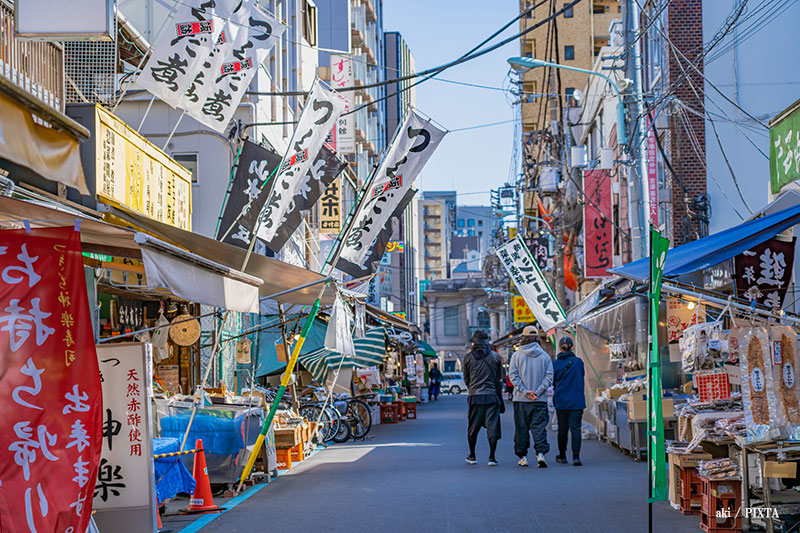
Tsukiji market outer area
In 2018, the inner market functions were relocated to Toyosu Market due to reasons such as improving hygiene and addressing aging facilities.
However, the outer market continues to operate, and its lively atmosphere remains as vibrant as ever.
Today, Tsukiji Outer Market is a popular destination for both domestic and international tourists who come to enjoy the fresh flavors and artisan food culture that only Tsukiji can offer.
From Tsukiji Market to Toyosu Market: what changed?
Toyosu Market, which took over the functions of Tsukiji’s inner market, presents a very different image compared to traditional markets.
To start with, Toyosu Market is an indoor facility, equipped with cutting-edge features such as strict temperature control and carefully planned traffic flow.
In addition, separate observation routes for visitors and professionals allow tourists to safely tour the market.

Toyosu Market
Whereas Tsukiji Market operated in an open environment, Toyosu is designed with hygiene and efficiency in mind, meaning entry into the core operations area is restricted.
Toyosu Market features dedicated observation spaces where visitors can watch tuna auctions through glass, though the sense of immediacy is somewhat subdued.
By contrast, Tsukiji continues to operate as the Outer Market, where the entire town retains the energetic feel of a bustling market.
Visitors can enjoy street food and shopping in a casual atmosphere, experiencing the charm that defines Tsukiji to this day.
Tsukiji Market vs. Toyosu Market: which should you visit?
So which should you visit—Tsukiji or Toyosu? The answer depends entirely on your interests and what you hope to get out of the experience.
| Market | Features & appeal | Recommended for |
|---|---|---|
| Tsukiji Outer Market | ・lively, casual food town ・rows of eateries and food shops ・traditional market atmosphere |
・tourists looking to eat and shop ・those wanting a taste of traditional Japanese market culture |
| Toyosu Market | ・modern, clean facility ・watch professionals at work ・indoor dining regardless of weather |
・people curious about the professional market scene ・those who want to enjoy high-quality seafood in a calm setting |
Who should visit Tsukiji Market (Outer Market)
If you’re looking to enjoy street food and shop, Tsukiji Outer Market is the place to go.
With a wide range of eateries and food shops, the outer market at Tsukiji offers not just sushi and sashimi bowls, but also finger foods and great souvenirs.
The lively atmosphere is perfect for first-time visitors or anyone looking to enjoy the market casually.
Tsukiji Outer Market is also recommended for those interested in traditional Japanese market culture. It retains the charm of old-school shopping streets, and interaction with local vendors is part of the fun.
Who should visit Toyosu Market
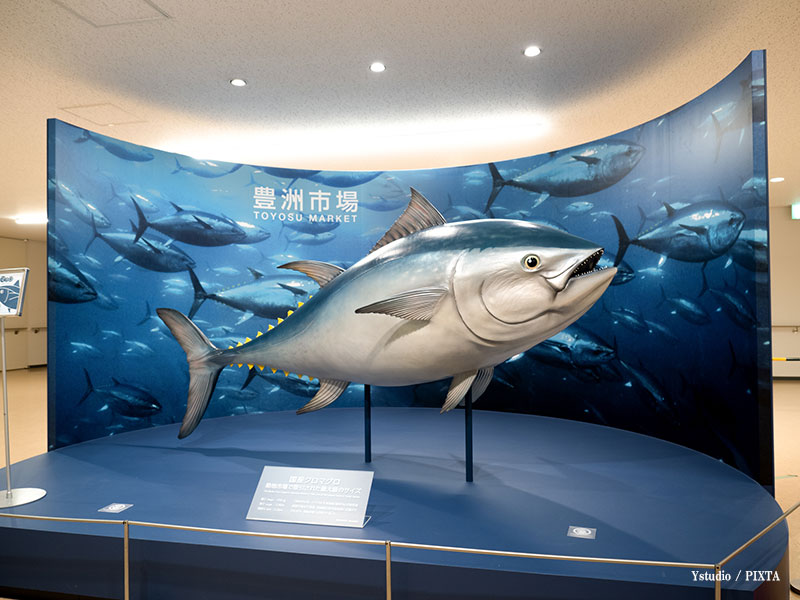
Toyosu Market
Equipped with the latest facilities and stringent hygiene standards, Toyosu Market is a modern wholesale market where you can observe professional operations.
Visitors can view scenes like the tuna auctions through glass—a rare chance to witness the action behind the scenes.
Unlike the bustling atmosphere of Tsukiji, Toyosu offers a calm environment where you can enjoy fresh seafood at your own pace.
The market features top-quality sushi and seafood restaurants, perfect for a quiet, refined dining experience. It’s ideal if you want to escape the crowds and enjoy your meal leisurely.
How to get to Tsukiji Market: Nearest stations & routes from major Tokyo hubs
Tsukiji Outer Market offers excellent access from Tokyo’s major areas, making it perfect for a quick visit in between sightseeing or for a morning street food stroll or lunch break.
Nearest Station ①: Tokyo Metro Hibiya Line – Tsukiji Station
Just a 5-minute walk from the station, this is the most convenient option.
Use Exit 1 or 2 and walk toward Tsukiji Hongwanji Temple—you’ll be at the market in no time.
Nearest station ②: Toei Ōedo Line – Tsukiji Shijō Station
As the name suggests (Tsukiji shijō means “Tsukiji Market” in Japanese), this station is very close—only about a 3-minute walk from Exit A1.
However, the station is quite deep underground, so even though it has elevators, it may not be ideal if you’re carrying a suitcase.
Nearest station ③: Tokyo Metro Hibiya Line / Toei Asakusa Line – Higashi-Ginza Station
Ideal if you’re walking over from the Ginza area.
It takes about 10 minutes on foot to reach the outer market from Higashi-Ginza Station, making it a great stop during sightseeing.
Routes from Tokyo, Shinjuku, Shibuya, and Asakusa Stations
Knowing how to reach the nearest stations from major areas like Tokyo, Shinjuku, Shibuya, and Asakusa can help you plan your day more efficiently.
| Departure station | Approx. time | Recommended route | Approx. fare |
|---|---|---|---|
| Tokyo Station | Approx. 20 min | Take the Marunouchi Line to Ginza Station → Transfer to Hibiya Line and go to Higashi-Ginza | Approx. 180 JPY |
| Shinjuku Station | Approx. 20 min | Take the Toei Oedo Line to Tsukiji Shijo Station | Approx. 270 JPY |
| Shibuya Station | Approx. 20 min | Take the Hanzomon Line to Aoyama-Itchome → Transfer to Oedo Line and go to Tsukiji Shijo Station | Approx. 290 JPY |
| Asakusa Station | Approx. 10 min | Take the Toei Asakusa Line to Higashi-Ginza | Approx. ¥220 |
At Tsukiji Outer Market, you can experience the lively, human atmosphere of a traditional market while interacting with local vendors.
It’s an ideal spot for those wanting a taste of old Tokyo. You’ll find everything from traditional sushi to easy-to-eat finger foods in this diverse foodie haven.
Meanwhile, Toyosu Market offers a chance to see a modern-day professional market in action. View tuna auctions through observation windows and enjoy the facilities in a well-organized, clean environment. Perfect for visitors wanting a glimpse behind the scenes.
Each market has its unique charm, and choosing based on your interests will enrich your culinary experience in Tokyo.
If you have time, why not visit both? It’s a great way to explore both the traditional and modern sides of Japan’s food culture in one trip.
All information in this article is current as of July 2025.
